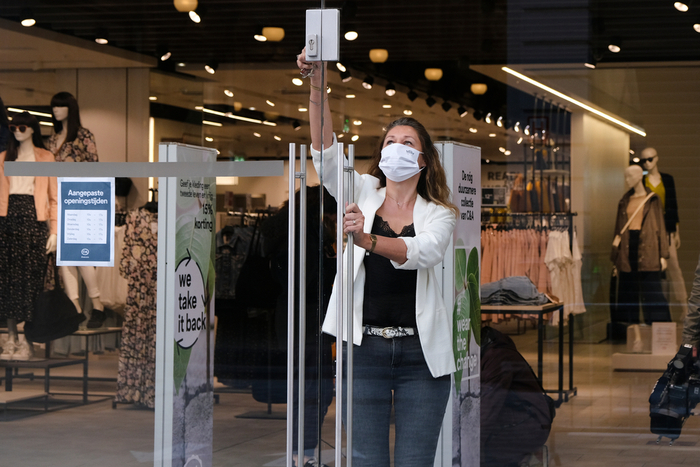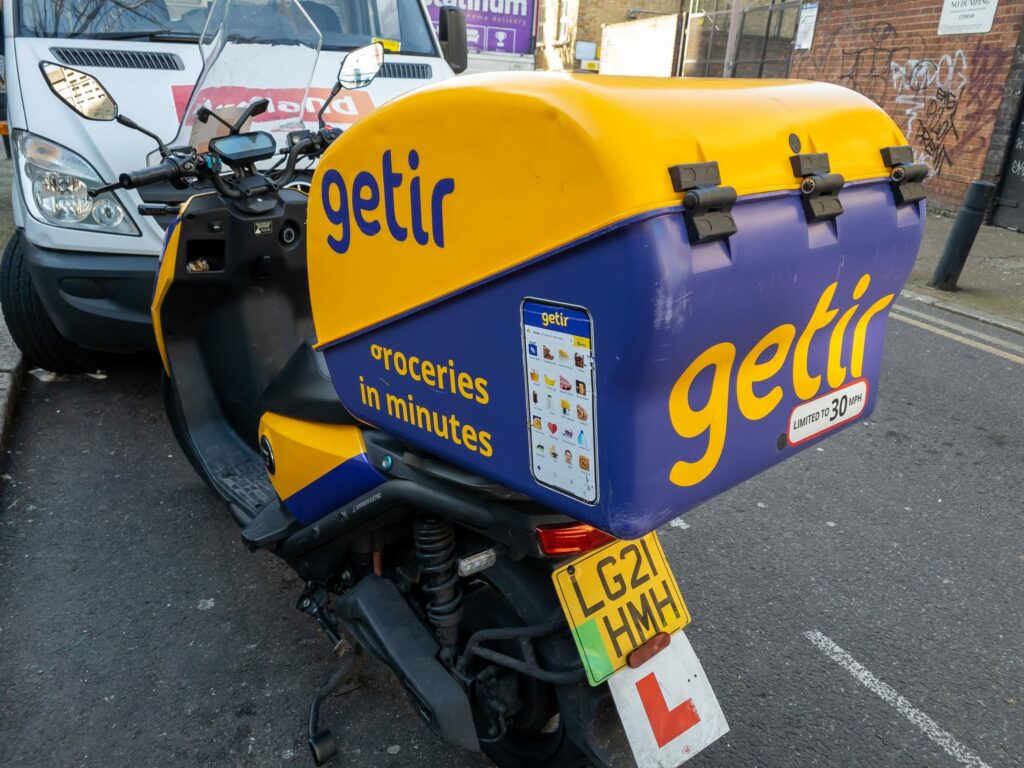Online retailers have had an advantage over physical retailers for quite some time given they can provide speedy service, around-the-clock shopping, personalised advertising, and home delivery.
It’s now been well-documented that the Covid-19 pandemic has accelerated the rising trend in online shopping. Consumers have been forced to learn how to utilise retailers’ online shops while brick-and-mortar stores remain closed under lockdown.
England went into its latest lockdown on January 5, shortly after London and and the South-East were placed under a localised lockdown before Christmas. Scotland also entered a national lockdown on January 5, while Wales went into lockdown on December 19 and Northern Ireland on December 26.
As with previous lockdowns, only essential retailers were allowed to keep their stores open for trade. Although the definition of this varied in each country, at the very least this meant grocers and convivence stores could remain open. Some countries like Scotland and Northern Ireland went further to ban click-and-collect services among non-essential retailers.
Yet given that the latest lockdowns are the part of a third wave of such high-level restrictions since the pandemic started a year ago, consumers have arguably become accustomed to shopping online.

From next month, non-essential retailers would be able to finally reopen again as per various phased lockdown exit plans in each of the four UK nations.
For England – home to 84 per cent of the UK’s population resides and the majority of retail destinations – that reopening date has been set for no earlier than April 12.
In Wales, non-essential retail can gradually reopen from March 22, although most will remain shut and will reopen on April 12 – the same as England.
Meanwhile in Scotland, some additional non-essential shops such as garden centres and homeware stores, plus non-essential click-and-collect services, can start to reopen open from April 5. But most non-essential retailers will remain closed until April 26.
As for Northern Ireland, from April 1 click-and-collect purchases will be allowed from garden centres and plant nurseries before being extended to all non-essential click-and-collect from April 12. Unlike the other UK nations, Northern Ireland said its lockdown exit would be driven by data, and as a result has not yet provided indicative dates of when non-essential shops can reopen.
With Prime Minister Boris Johnson aiming for all Covid-19 restrictions to be lifted by late June and for the UK to return to a normality that resembles more like pre-pandemic times, should online retailers be concerned about losing customers returning to the high street?

It’s no secret that retailers such as Primark – which does not have an ecommerce channel – have lost out on sales as a result of the increased restrictions and lockdowns.
The parent company of Primark, Associated British Foods (AB Foods) said last month that the retailer had lost out on sales of £1.1 billion over the past six months. Nevertheless, AB Foods anticipates a strong boost once Primark stores reopen and pent-up demand is met – despite the further £480 million hit to sales it expects from March to August.
Meanwhile, online behemoths such as Asos and Boohoo Group have undeniably capitalised on the crisis by accelerating their offerings. In fact, Asos relaunched Arcadia Group’s Topshop on its website shortly after buying the fashion retailer’s brand and online assets out of administration in January.
Although the transaction was not in response to the pandemic, the Topshop addition to Asos’ platform has boosted its appeal amid the crisis, particularly after its shares rose 13 per cent in the two days since it sealed the £330 million deal to acquire Topshop, Topman and Miss Selfridge. Asos is now currently valued at just over £5 billion – almost twice as much as Marks & Spencer at £2.7 billion.
On the other hand, Boohoo Group bought the brand and online businesses of collapsed department store chain Debenhams, and the other half of Arcadia Group, Dorothy Perkins, Wallis and Burton, amid the pandemic.
The acquisitions demonstrate confidence for ecommerce players in a industry that has arguably been long dominated by bricks-and-mortar. After all, ecommerce could never replicate the customer experience of physical stores – from being able to touch or try out products to providing instant gratification, face-to-face customer service, and interactive services.
Earlier this month, bricks-and-mortar retailers were handed good news when Chancellor Rishi Sunak announced in his Budget that the business rates holiday in England would be extended until the end of June for hard-hit retailers and hospitality and leisure firms that operate premises on high streets, shopping centres and retail parks.
“Online shopping will continue to be a growing market even as restrictions lift”
Sunak added that for the remaining nine months of the tax year, business rates would still be discounted by two-thirds, up to a value of £2 million for closed businesses, with a lower cap for those who have been able to stay open during lockdowns due to “essential” status.
On the other hand, separate business rates holiday extensions of up to 12 months were announced by the devolved governments of Wales, Scotland and Northern Ireland.
Nonetheless, online retailers are already anticipating a hit to sales and profits once high streets, shopping centres and retail parks begin to fully reopen.
For example, last month online fashion retailer Mytheresa warned of a sales slump following the announcement of England exiting lockdown on April 12. Although it recorded a sales rise of 30.4 per cent year-on-year to £247.1 million for the six months to December 31, it was expecting its growth to slow down later this year.
Despite this, Ed Hill, senior vice president at retail tech firm Bazaarvoice, believes online shopping will continue to be a growing market, even as restrictions begin to lift.
“Ecommerce giants like Boohoo and Asos are making strong investments to direct consumers towards online and are especially targeting younger consumers that are shopping in new ways, such as through social media,” he said.
Mark Thomson, retail industry director at Zebra Technologies, told Retail Gazette that throughout this year, it was looking increasingly likely that ecommerce retailers would take to the high street – especially Amazon.
Earlier this month the online giant opened its first cashier-less Amazon Fresh grocery store in London, and this was quickly followed up by another store opening just this week. The Amazon Fresh store uses “computer vision, deep learning algorithms and sensor fusion” to automatically detect any items a customer puts in their shopping basket or returns to the shelf. Shoppers sign in via their Amazon account when entering the store, select their items then simply walk out, paying for items automatically via their accounts when they exit.
This growing trend of bringing ecommerce stores offline could see new retail formats implemented in pop-up shops and interactive ecommerce kiosks. But Amazon’s new Fresh stores may not pose a substantial threat, as supermarkets have had a few years to prepare and test their own checkout-free shopping concepts.
Despite this, retailers including Marks & Spencer, Tesco and Sainsbury’s still require consumers to scan items into a smartphone or other device. Despite Amazon’s approach promising a more “frictionless” experience than competitors, its physical presence still addresses some of its weaknesses, such as the mounting cost of deliveries and returns.
Richard Johnson, co-founder of social commerce app MyStreet, said consumers have the desire to return to the high street and were likely to view a trip to the shops as much more of an “occasion” because of the ongoing restrictions. He added that online retailers would no doubt experience a short-term decline in sales amid the inevitable transition of consumers returning to bricks-and-mortar shopping.
“That being said, digital transformation has accelerated and so it’s quite likely that a year on from non-essential shops being open, we’ll see a new way of shopping that sees much more of a balance between online and physical shopping,” Johnson said.
“Online retailers will no doubt experience a short-term decline in sales”
Over the past year, the retail landscape has changed dramatically. Shoppers previously loyal to the high street have now had to learn to adopt to and/or embrace online shopping.
Adam Hindhaugh, chief product officer at technology firm Ve Global, re-iterated how the high street had been in decline even before the pandemic began, pointing to the rise in online shopping that was growing rapidly before Brits were ordered to stay at home.
“Physical stores will still have their place, but the retailer that has a consistent customer experience both online and in-store will keep the customer engaged,” he said.
Melissa Minkow, retail industry lead at IT company CI&T, argued that Brits were early adopters of online retail, and “their affection for the ease and convenience of the digital path to purchase is inherent in their buying behaviours”.
“There would need to be a significant disruption such as a high online-only tax to uproot these behaviours significantly and tip the scales back towards brick-and-mortar habits,” she added.
For retailers, surviving the impact of the pandemic is still about getting cash in the till. Retailers may need to ditch ideas on developing new product offerings, and instead invest in marketing and selling to a mass population to take on their competition.
They should also take advantage of the opportunities that commercial holidays bring about, such as Easter, using them as a time to boost revenue and shift any leftover stock.
Hindhaugh argued that for online retailers, it may be difficult to replicate the in-store customer service, particularly if a customer looking for a tailored suit in Savile Row for example.
“We can also expect that furniture stores continue to use high street space as their showrooms, in the way that Made.com does,” he added.
To keep up and continue the rate of growth, online retailers may need to consider the importance of the customer experience and what the physical presence can do for shoppers.
Ultimately, customers now expect retailers to offer next day delivery perks and “back in stock” app notifications. The “I want it now” mentality stretches across all industries, and retailers are feeling the pressure to provide a consistent high standard service. If retailers fail to offer multiple delivery options and stock visibility at the push of a button, then they are at risk of losing customers to competitors who are able to do so.
As the country begins to open up again, online retailers should ensure that they have an online customer experience designed for the “discovery” stage of shopping, rather than it being a purely transactional buying experience. They can utilise social media as a way to bridge this gap and provide consumers with engaging content tagged with product metadata.
Having a physical presence can be vital for some retailers to survive and remain front-of-mind for consumers. Only time will tell which businesses will come out on top, and which experience better connects with consumers in the long run.
Click here to sign up to Retail Gazette‘s free daily email newsletter


















